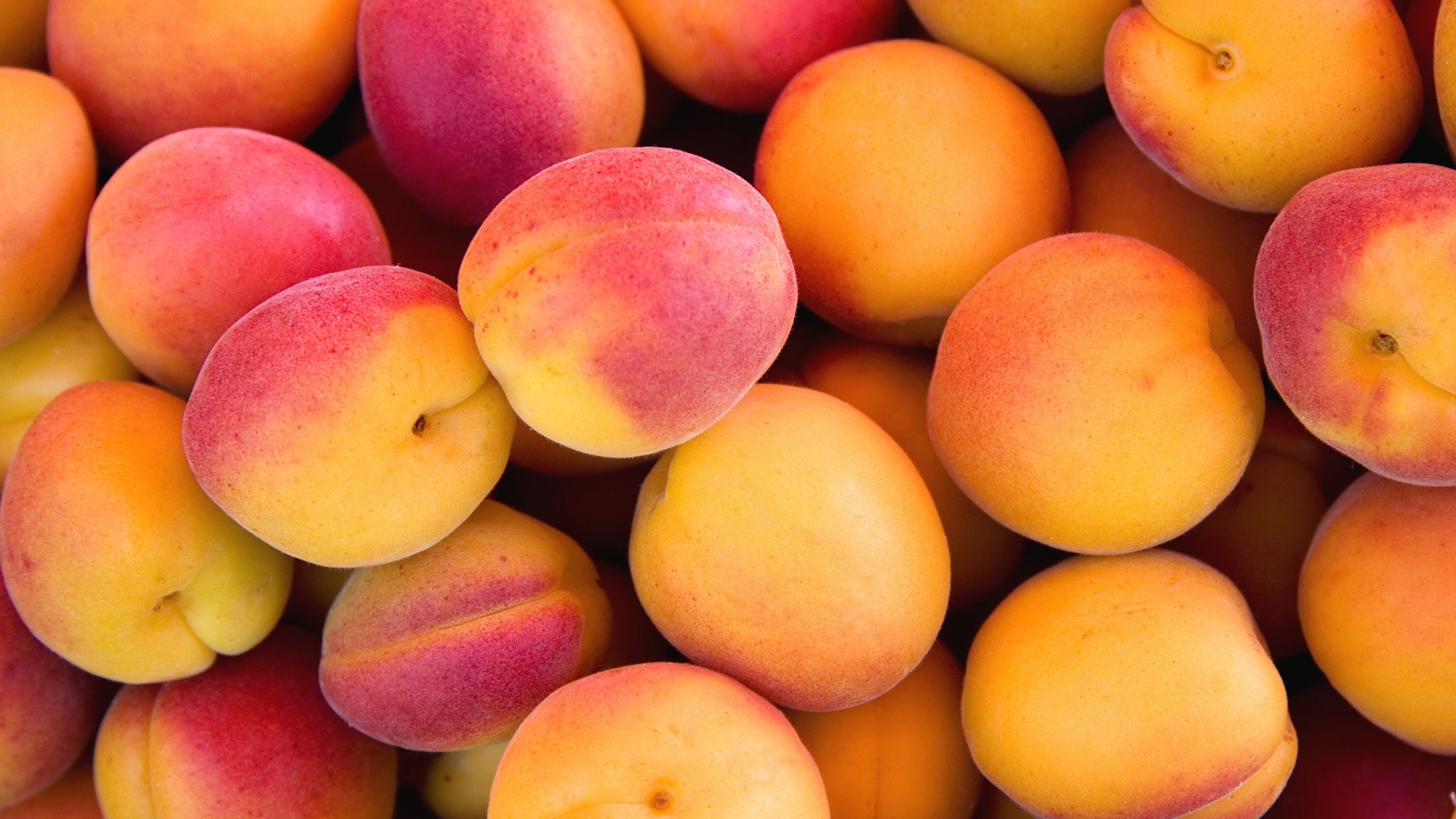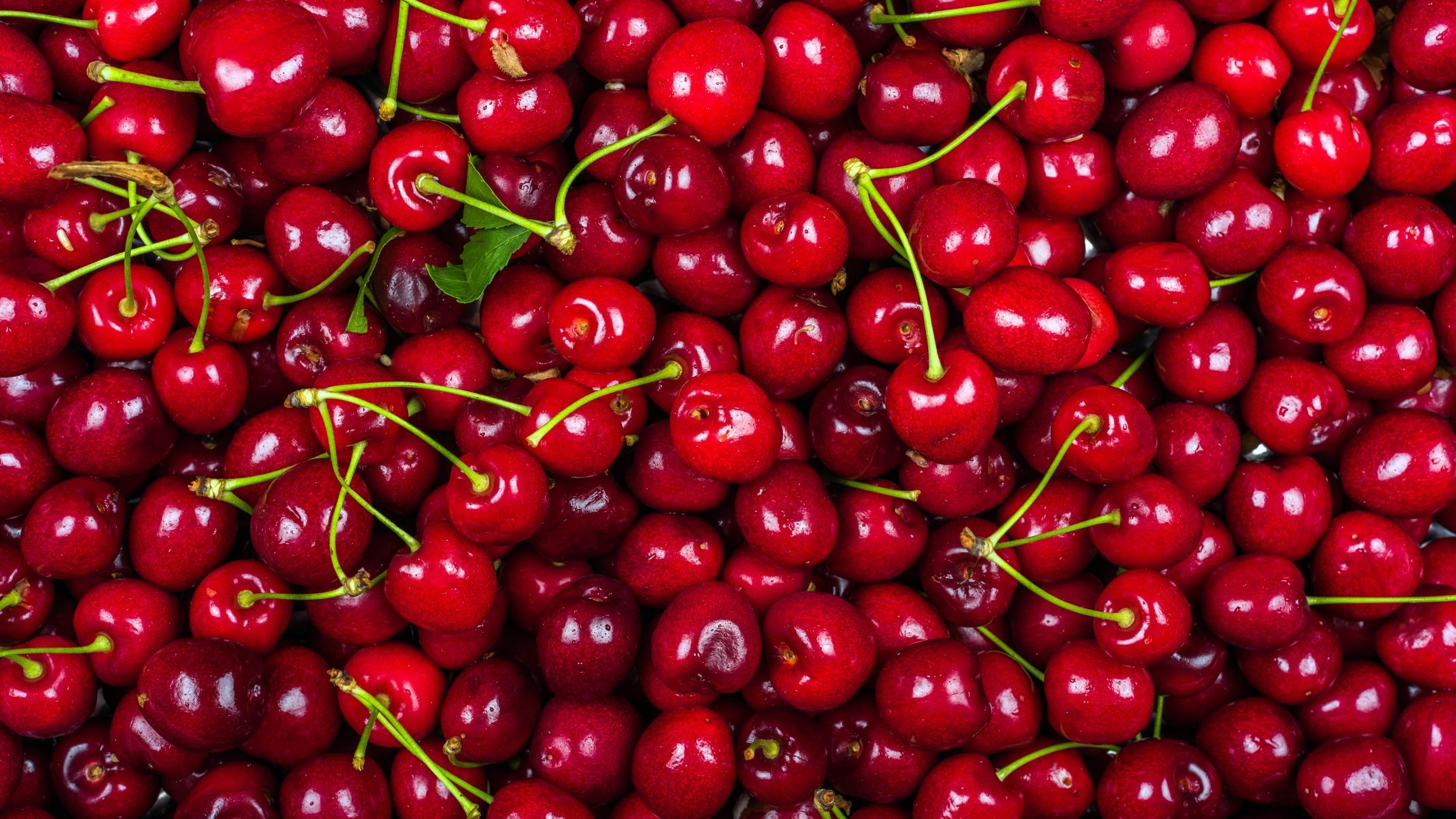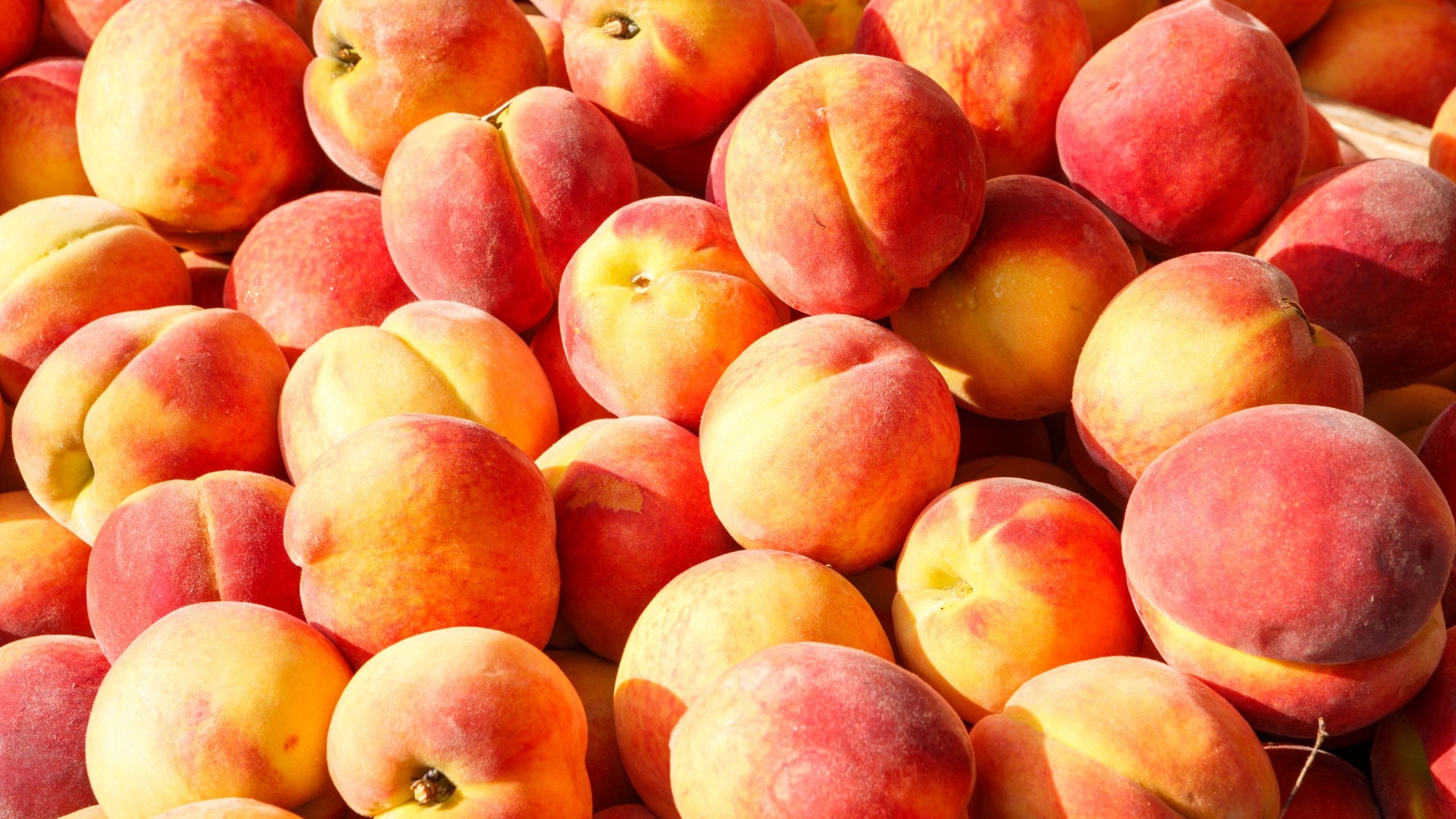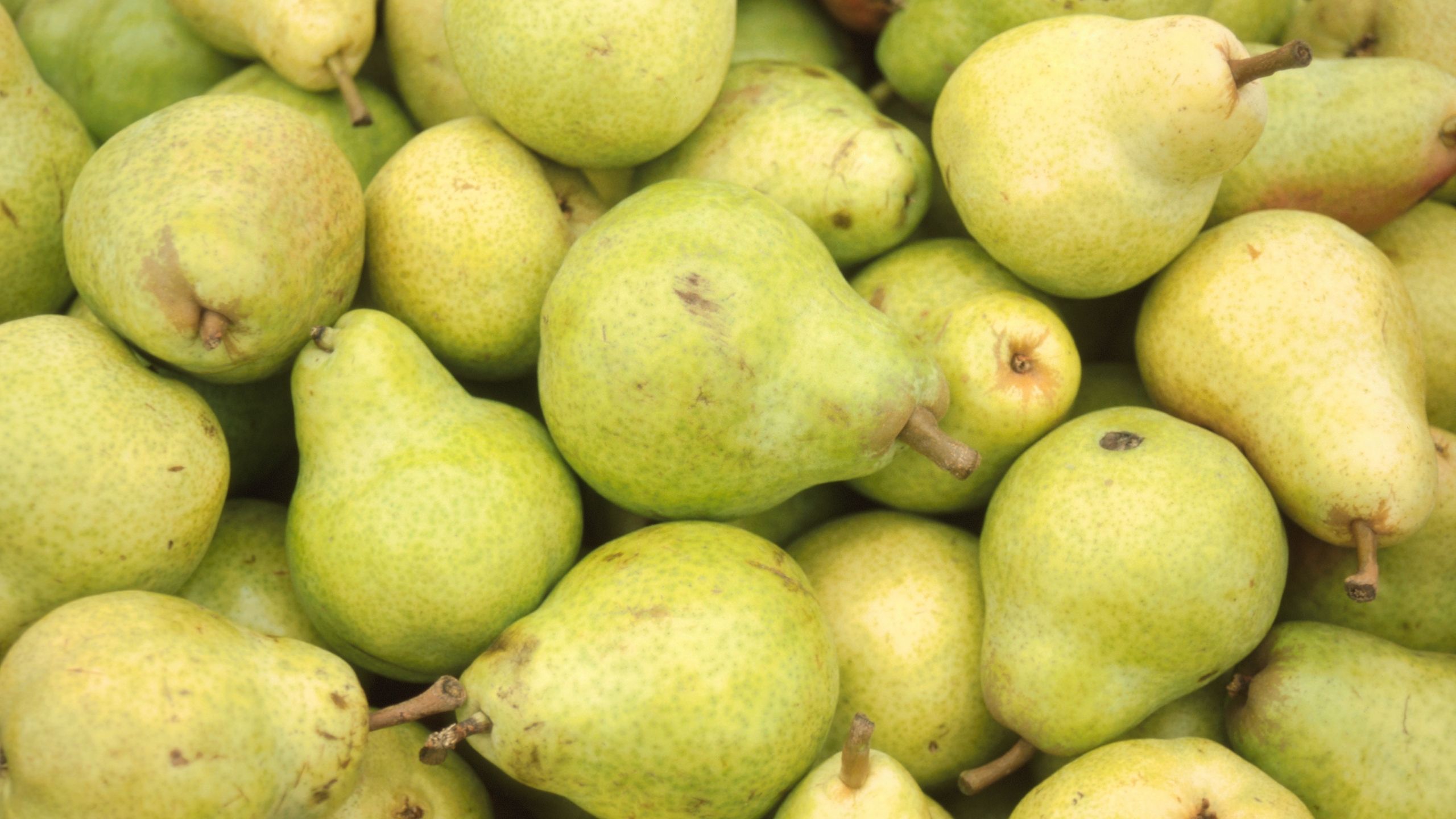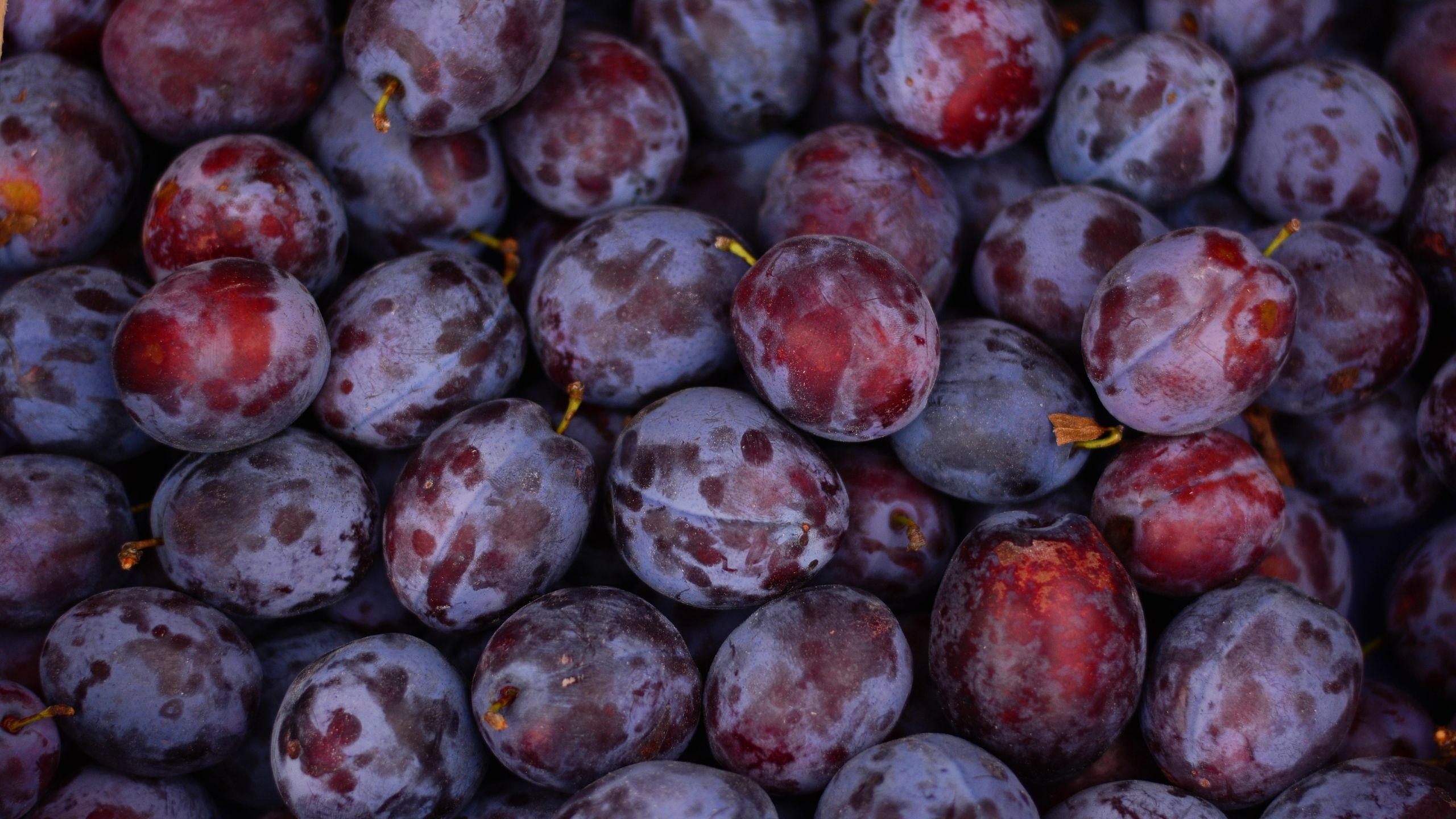Fruit Pests: Apricot
The Backyard Orchardist
January 2020
Marion Murray, Extension IPM Specialist • Diane Alston, Extension Entomologist (No longer at USU)
DISEASES
(Listed in Order of Importance)
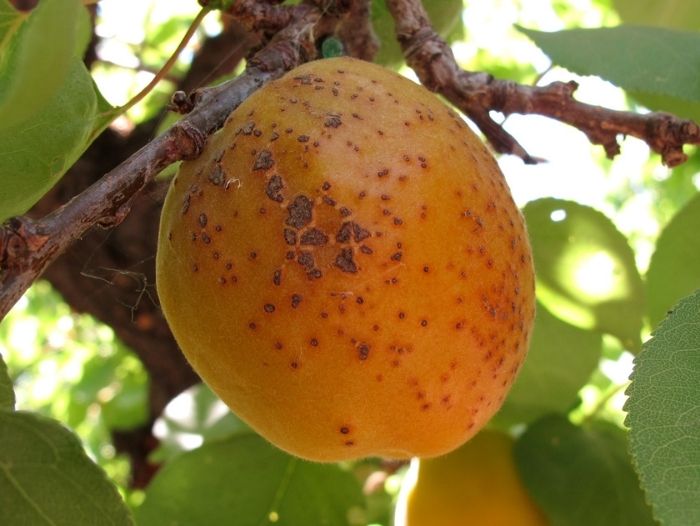
Coryneum Blight (Shothole)
Importance as a Pest on Apricot: high
Other Fruit Hosts: nectarine, peach, and sometimes cherry
General Info: Shothole is a common fungal disease in Utah. It attacks dormant leaf buds, blossom buds, leaves, fruit, and twigs. The first visible lesions occur on young leaves as small, round, tan spots that eventually fall out, leaving round holes. Circular lesions develop on fruit that first appear as reddish spots, and later as rough, corky bumps. Apricots are very susceptible.
Symptoms:
- round, corky or sunken spots on fruit
- dead twigs
- holes in leaves
- dead buds that ooze gum
Management: Prune and destroy all infected plant tissue. Prevent irrigation water from wetting leaves because the water will spread spores. For severe infections, apply a copper spray in fall when 50% of the leaves have dropped to prevent infections on fresh leaf scars.
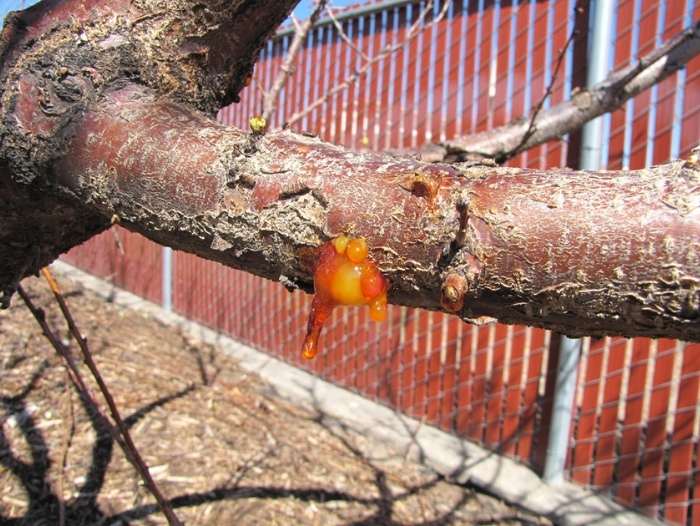
Gummosis
Importance as a Pest on Apricot: moderate
Other Fruit Hosts: all stone fruits
General Info: Gummosis is a general term describing the prolific oozing of clear sap from beneath the bark. Gumming is produced in response to a variety of conditions, including insects, diseases, and wounding. It can also be a response to poor growing conditions, such as compacted soil.
Symptoms:
- gelatinous-like ooze on bark
Management: To most accurately identify the cause of gummosis, consult your local county Extension agriculture agent.
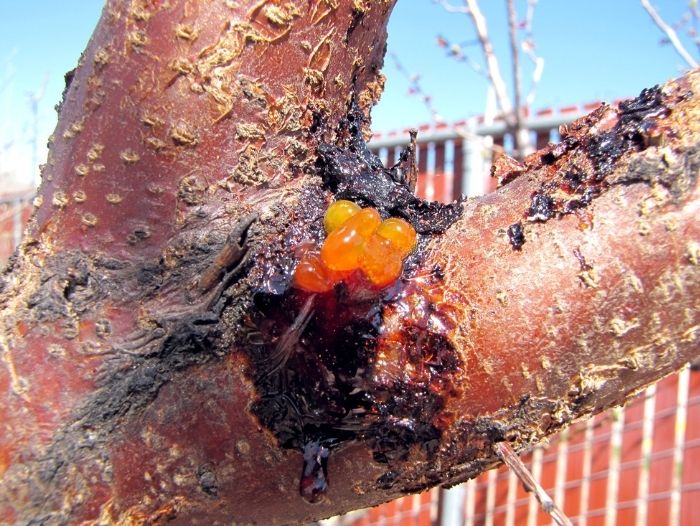
Perennial Canker
Importance as a Pest on Apricot: moderate
Other Fruit Hosts: cherry, nectarine, peach and plum
General Info: Also called cytospora canker, perennial canker is caused by a fungus. Cankers are areas of dead cambium and bark and can occur on stems, limbs, and twigs. They are off-color, usually oval-shaped, and usually slightly sunken. Dark amber gum may exude from the canker edges. Cankers enlarge yearly or advance down side branches. Spores spread this fungus during wet weather, and successful infections occur in weak or wounded tissue.
Symptoms:
- amber-colored ooze
- flaking bark
- necrotic (brown) cambial tissue just under the bark
Management: Prevent wounding of the bark from winter sunscald by applying “white tree wrap” from December to April. Also, avoid injury to bark by cats, hedge trimmers, etc. And finally, control wood-boring insects, since their damage may allow entrance of the fungus. Prune infected branches by cutting at least 4 inches below the visibly diseased wood (scrape away bark to find the edge of the canker).
INSECTS
(Listed in Order of Importance)
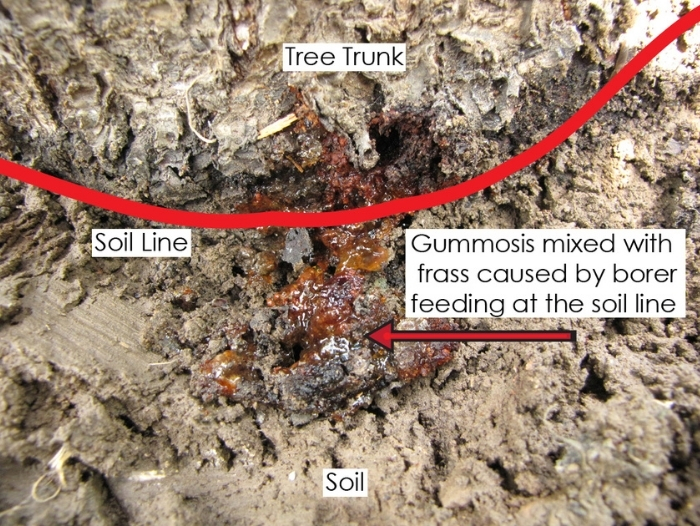
Greater Peachtree (Crown) Borer
Importance as a Pest on Apricot: moderate
Other Fruit Hosts: nectarine, peach, and plum
General Info: The larval form of this clearwing moth damage trees by tunneling in the cambium, just below the bark, typically at the soil-line of the trunk. Backyard orchardists should look carefully for round holes near the soil-line and oozing tree sap mixed with frass (sawdust-like excrement, shown at right). Adult moths begin activity in late June and mated females lay their eggs on the base of tree trunks or upper roots. Trees may be girdled and die due to borer injury. Young trees and old or drought-stressed trees are vulnerable.
Symptoms:
- ooze mixed with sawdust-like frass at the soil line
- dieback of canopy
Management: Remove all weeds and tall grass from around the base of the trunk. Preventive trunk sprays (permethrin or carbaryl) is the main control tactic for conventional management. Apply once per month from early July through September, on the lower 12 -18” of trunk and exposed roots. Organic options include products containing spinosad (apply every 10 days), or the use of beneficial nematodes. (Contact your local county Extension agriculture agent for more information on the use of nematodes.)
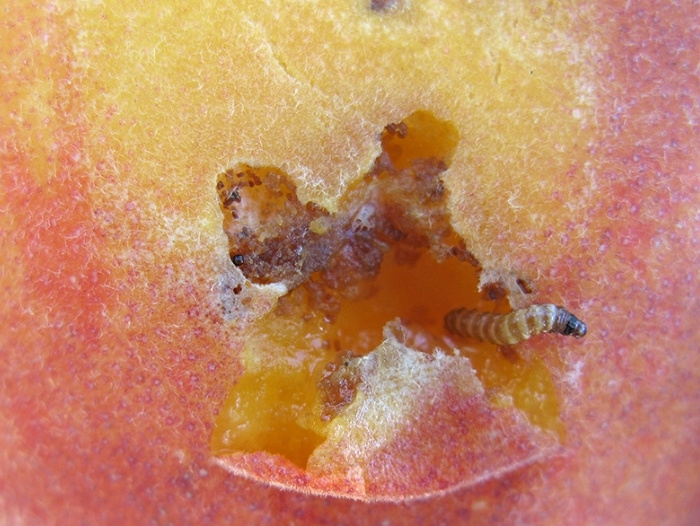
Peach Twig Borer
Importance as a Pest on Apricot: moderate
Other Fruit Hosts: nectarine, peach, and plum
General Info: In spring, chocolate brown larvae emerge from overwintering cells on the limbs of trees and then tunnel into succulent shoot tips. Infested twigs die back and small amounts of gum may exude from tunnel openings. In summer, a second generation of these “worms” enters fruit when succulent shoot growth has ceased. In backyard trees, injury may not be severe enough to require treatment every year.
Symptoms:
- frass (sawdust-like excrement) on fruit
- holes in fruit
- dead shoots
Management: Peach twig borers activity is determined by seasonal temperatures, and the timing of activity varies from year to year. To find out when peach twig borer is active in your area of the state, and for spray recommendations, contact your local county Extension agent or subscribe to the USU IPM Tree Fruit Advisory. Conventional insecticides include pyrethroids (products ending in “thrin”), carbaryl, and malathion, and organic options include spinosad and Bt (Bacillus thuringiensis).
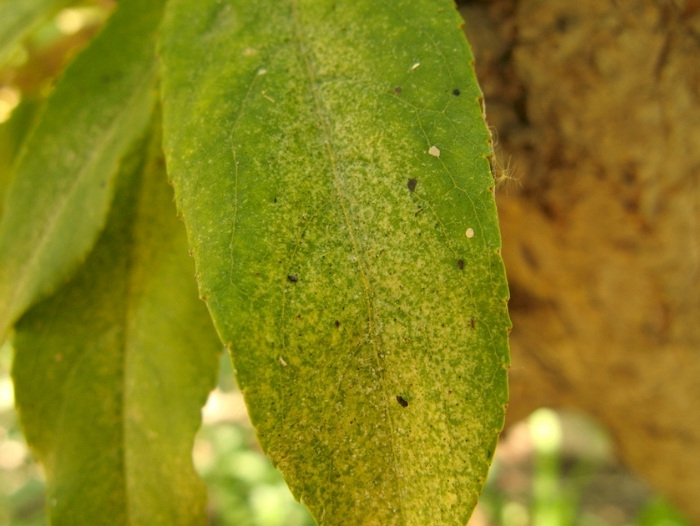
Spider Mites
Importance as a Pest on Apricot: moderate
Other Fruit Hosts: all fruits
General Info: Mites are very small arthropods that are more closely related to ticks than insects. They overwinter as adults at the base of trees and may become a problem during hot, dry conditions in mid and late summer when they reproduce rapidly.
Symptoms:
- stippled leaves due to removal of chlorophyll
- loss of tree vigor
- fine silk webbing that becomes apparent when populations are high
Management: Predatory mites that feed on spider mites can provide effective biological control if they aren’t harmed by pesticides. Spider mite outbreaks often follow pesticide applications that upset the predator-prey balance. If needed, mites can be managed by washing down trees or plants with a stiff spray of water, and/or applying insecticidal soap or 1% horticultural oil (both are organic). Avoid applying soaps or oils during the hot part of the day as some leaf burn may result.
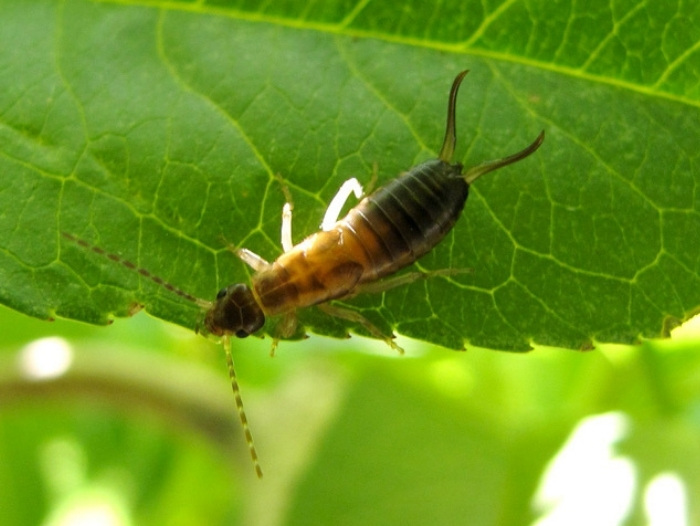
Earwigs
Importance as a Pest on Apricot: low
Other Fruit Hosts: all fruits, but especially stone fruits and berries
General Info: Earwigs will climb the apricot trunk and chew into fruits as they near maturity. They also feed on other insects so their presence, at times other than when fruits are ripe, is beneficial.
Symptoms:
- shallow or deep holes in fruit
- black dots of excrement around feeding sites
Management: Remove debris and weeds from touching the base of trees. Rolled cardboard strips tucked into limb crotches can be used to trap and remove earwigs from trees (remove and replace cardboard rolls). Another option is to wrapping the trunk with a 3” wide band of duct tape covered with tanglefoot (a sticky substance). If necessary, applying carbaryl or spinosad (organic) to the tree will provide a short interval of protection.
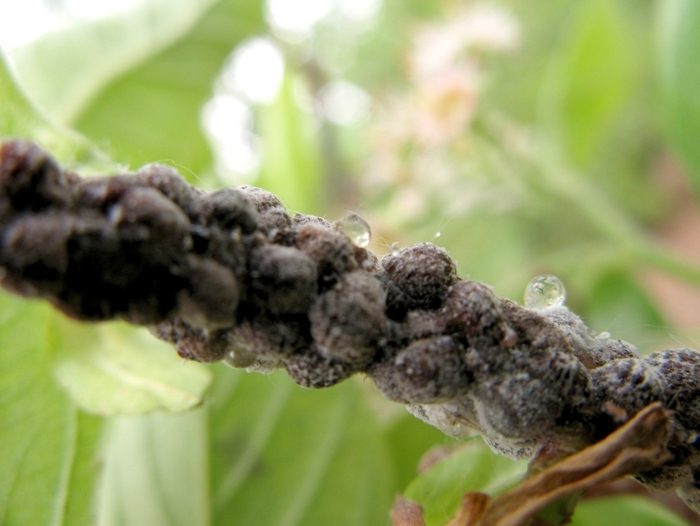
European Fruit Lecanium Scale
Importance as a Pest on Apricot: low
Other Fruit Hosts: all fruit trees
General Info: Lecanium scale is a soft scale that has piercing-sucking mouthparts that remove plant phloem or sap. In early summer, thousands of young scales called “crawlers” emerge from under the mother scales and move to new sites to feed. Lecanium scale can build to large populations quickly if not managed. The crawler stage occurs from early July to mid-August in northern Utah.
Symptoms:
- slow tree growth
- yellowed leaves
- leaf drop
- honeydew
- twig dieback
Management: In spring before leaves emerge, scrub infested limbs with a mesh dish sponge to remove adults. In addition, apply a 2% oil application when apricot buds start swelling, and apply 1% oil or insecticidal soap in early July on crawlers.
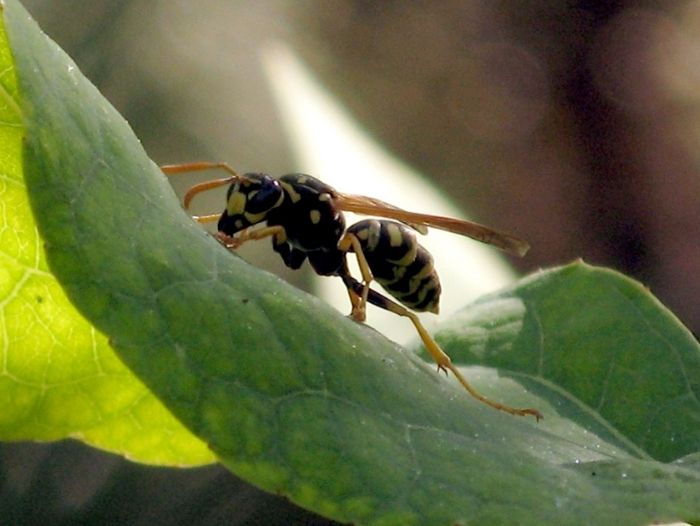
European Paper Wasp, Yellow Jackets
Importance as a Pest on Apricot: low
Other Fruit Hosts: soft ripe fruit
General Info: The European paper wasp builds umbrella-shaped nests in protected sites and yellow jackets build nests underground. The European paper wasp is very attracted to soft ripe fruit.
Symptoms:
- holes in fruit
Management: Clean up rotting fruit on the ground and regularly pick ripe fruit. To trap European paper wasps, cut the top third of a soda bottle off and invert it into the bottom portion. Punch holes along the top edges and insert wires for hanging. Fill the bottle with 1 part fruit juice, 10 parts water, and 1 tsp detergent. Hang the trap in peach trees or nearby areas just before fruit starts to ripen, and empty and re-fill as necessary.


